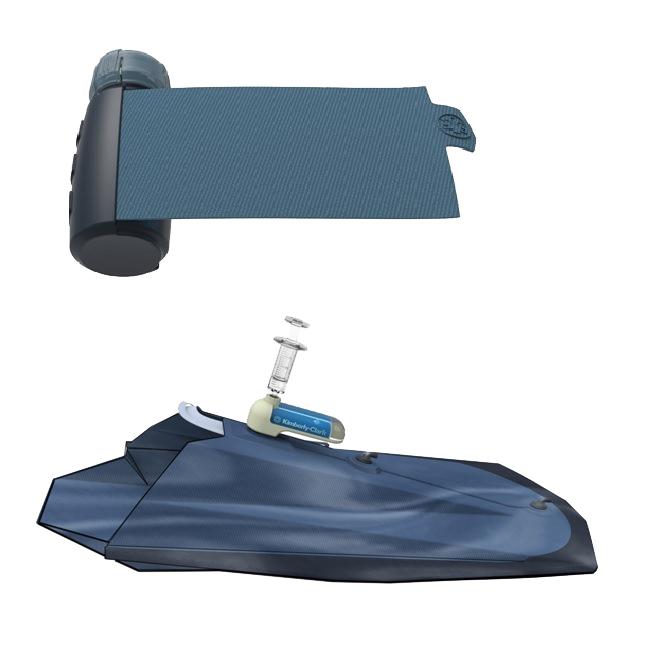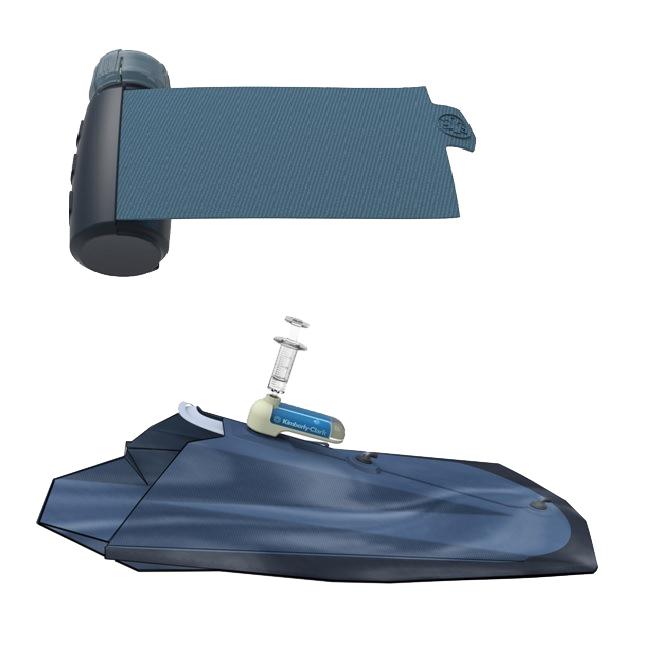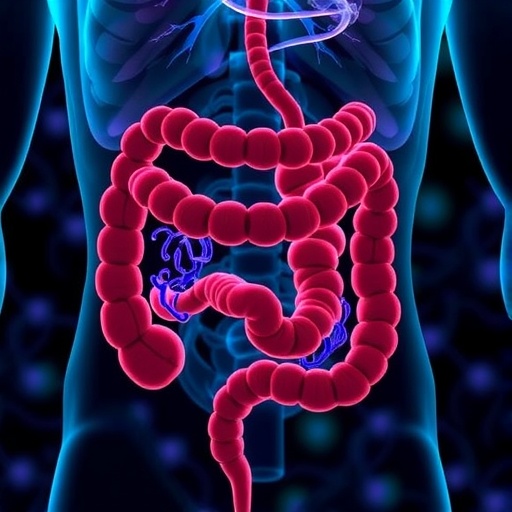
Credit: (Photo courtesy of Battelle)
ARLINGTON, Va.–The moments after a traumatic limb injury resulting from an explosive blast are critical. Blood is lost, tissue begins to dry and deteriorate, and dirt and harmful bacteria may enter the wound–increasing the risk of infection, limb loss or even death.
To combat this threat, the Office of Naval Research (ONR) is sponsoring work to develop a breakthrough medical wrap that will not only cover injured limbs, but also mitigate damage and protect tissue for up to three days. The wrap will be called the Acute Care Cover for the Severely Injured Limb–or ACCSIL–and will be demonstrated within the next two years.
"ACCSIL will be carried by corpsmen and medics, administered at the point of injury on the battlefield and used in conjunction with a tourniquet," said Dr. Tim Bentley, a program manager in ONR's Warfighter Performance Department, who oversees the research. "It will be lightweight, keep the wound fresh and maintain tissue condition for up to 72 hours–which is particularly important as we plan for future scenarios where prolonged field care will be required."
ACCSIL is being designed by Battelle, an Ohio-based research and development organization, in partnership with ONR, the Naval Research Laboratory and the Naval Medical Research Center. The wrap will comprise two main parts: (1) an outer cover that will conform to the shape of the injured limb, stop blood loss, retain body heat and block out dirt, and (2) a "bioactive" inner layer coated with specially designed chemical compounds to release antibiotics and pain medication, keep tissue moist, and prevent bacterial and fungal growth.
"Successful development of this system will provide military medics with a solution currently unavailable to them," said Kelly Jenkins, director of advanced materials for Battelle's Consumer, Industrial and Medical business unit. "Current bandages aren't very good at keeping out bacteria, so a lot of medics improvise by using plastic wrap and lots of tape–which is actually really good at keeping the wound moist but not protecting or preserving tissue. ACCSIL will function much better."
For Jenkins, ACCSIL's ability to preserve tissue for up to 72 hours will be the wrap's most valuable virtue, especially in remote combat zones where it might take several days to transport an injured warfighter to a military hospital.
"The goal with this wrap is not healing but preservation," said Jenkins. "We want to try to stop time–to keep the wound as fresh as when it first happened and give surgeons up to 72 hours to start treatment. Even if ACCSIL can't save the whole limb, we want to save enough of the limb to give the patient a good quality of life they might not otherwise have had in such a situation."
ACCSIL's use could potentially go beyond the battlefield to industrial settings aboard ships or submarines–where Sailors and Marines risk crushed limbs from steel plates or hatches, or burns from ruptured steam lines. The wrap also could be a lifesaver in civilian scenarios like farming or automobile accidents, or terrorist attacks like the recent bombings in France and Brussels.
"ACCSIL will be designed as a 'tactical to practical' tool," said Jenkins. "Not just for warfighters, but also for first responders and law enforcement. Urban warfare and domestic terrorism present a real need for a device like ACCSIL, which can dramatically improve medical treatment during such an event."
###
Media Contact
Bob Freeman
[email protected]
703-696-5031
@usnavyresearch
http://www.onr.navy.mil





